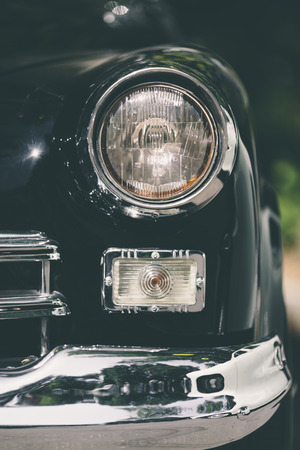Introduction to Laid-Up Cover
Laid-up cover is a specialised form of car insurance tailored for vehicles that are not being driven on public roads, particularly during periods of storage or restoration. For classic car owners in the UK, this type of insurance provides peace of mind when their prized possessions are off the road—perhaps tucked away in a garage over winter or undergoing detailed refurbishment. Unlike standard motor insurance, laid-up cover does not include any road risk element; instead, it focuses on protecting your investment against risks such as fire, theft, vandalism, and accidental damage while the car is stationary. Given the often significant value and sentimental importance attached to classic cars, owners seek this cover to safeguard their vehicles without paying for unnecessary road-use protection. In essence, laid-up cover offers a cost-effective way to ensure your classic car remains insured even when it is not clocking up miles on the tarmac.
2. When is Laid-Up Cover Appropriate?
For many classic car enthusiasts in the UK, laid-up cover becomes a practical and cost-effective choice during specific periods when their cherished vehicles are not in regular use. Below, we outline common scenarios where laid-up insurance is particularly appropriate, reflecting typical British practices for preserving classic cars.
Typical Scenarios for Laid-Up Cover
| Scenario | Description | Why Laid-Up Cover? |
|---|---|---|
| Storage During Winter | Many owners store their classics over the colder months to avoid road salt and adverse weather conditions. | Provides protection against theft, fire, and accidental damage while off-road. |
| Restoration Projects | Vehicles undergoing restoration, whether minor repairs or complete overhauls, often remain off the road for extended periods. | Covers risks like fire or theft in garages or workshops without paying full road insurance. |
| Seasonal Usage | Some classic cars are only driven during summer or on special occasions such as car shows. | Keeps costs down while ensuring protection when the car is not in use. |
British Classic Car Preservation Practices
In the UK, it’s quite common for owners to remove their vehicles from public roads during SORN (Statutory Off Road Notification) periods. This official declaration to the DVLA means the vehicle is not taxed for road use and must not be driven or parked on public roads. During SORN periods, laid-up cover ensures your investment remains safeguarded against non-driving risks.
Moreover, British collectors often store classics in purpose-built garages or barns—sometimes even in climate-controlled environments—to combat moisture and rust. A laid-up policy complements these preservation efforts by offering financial protection tailored to non-use scenarios.
Choosing the right time to switch to laid-up cover depends on your storage plans, restoration schedules, and seasonal driving habits. Reviewing your calendar and understanding how long your classic will be off the road each year can help you optimise both cost efficiency and vehicle protection.
![]()
3. Key Features of Laid-Up Policies
Laid-up insurance policies are tailored for classic car owners in the UK who store their vehicles off the road, whether for restoration or during periods of non-use. Understanding what is included—and excluded—in a laid-up policy can help you ensure your prized vehicle is properly protected while keeping costs in check.
Main Inclusions: What Is Typically Covered?
The core of a laid-up policy centres on three main types of cover:
Fire Damage
This protects against loss or damage caused by fire, whether accidental or as a result of electrical faults during storage or restoration work. In the UK, insurers often stipulate that the vehicle must be kept in a locked garage or secure building to qualify for full fire protection.
Theft
Laid-up policies provide compensation if your classic car is stolen while stored, provided reasonable security measures are in place. This may include approved locks, immobilisers, or alarm systems as specified by the insurer. It’s essential to comply with these conditions to avoid claim disputes.
Accidental Damage
If your vehicle sustains damage from accidental impacts—such as falling objects in a garage, mishaps during restoration, or minor collisions whilst being moved within private premises—laid-up cover will typically respond. However, it’s crucial to check whether accidental damage extends to third-party workshops if your car is off-site for professional repairs.
Typical Exclusions and Limitations
Most UK laid-up policies exclude any damage incurred while driving on public roads. MOT and road tax are not required since the car is declared SORN (Statutory Off Road Notification). Additionally, many policies do not cover wear and tear, rust, or gradual deterioration during long-term storage.
Policy Conditions and Documentation
Insurers usually require documented proof that the car remains off public highways and is stored at a registered address. You may also need to submit recent photographs or valuation certificates for classic vehicles of higher worth. Failing to meet these requirements can result in reduced payouts or claim rejection.
Summary Table: Standard Laid-Up Cover Features
- Fire Damage: Included (with storage conditions)
- Theft: Included (security requirements apply)
- Accidental Damage: Included (on private property only)
- Road Use: Not covered
By understanding these key features and UK-specific conditions, you can make an informed decision about which laid-up policy best suits your classic car’s storage and restoration needs.
4. Cost Considerations and Savings
When evaluating whether laid-up cover is right for your classic car, a key factor is cost-effectiveness compared to standard comprehensive or third-party policies. Since laid-up insurance excludes road use and focuses solely on risks like theft, fire, or accidental damage while the vehicle is off the road, premiums are generally much lower.
Comparative Cost Analysis
In the UK, average annual premiums for laid-up cover can range from £50 to £150, depending on factors such as your car’s value, storage conditions, and postcode. In contrast, a standard classic car policy often starts at around £200 and may exceed £400 per year for higher-value vehicles. The following table illustrates typical price ranges:
| Insurance Type | Average Annual Premium (UK) | Main Cover Features |
|---|---|---|
| Laid-Up Cover | £50–£150 | Theft, fire, accidental damage (off-road only) |
| Standard Classic Car Insurance | £200–£400+ | Theft, fire, accidental damage (on-road and off-road), legal liability |
Typical Exclusions and Their Impact on Cost
One reason laid-up policies are more affordable is their limited scope. They do not cover any road use—driving to shows, garages, or even moving the car outside for maintenance purposes requires at least a temporary upgrade to road risk cover. Additionally, most policies will not insure against mechanical breakdown or gradual deterioration.
Savings in Context
If your classic car spends several months each year in storage or under restoration, opting for laid-up cover could save you over 50% compared to maintaining a full policy year-round. However, ensure you do not inadvertently invalidate your policy by moving the vehicle on public roads without appropriate cover—doing so could lead to significant financial penalties or claims being rejected.
Summary Table: Key Differences at a Glance
| Laid-Up Cover | Standard Cover | |
|---|---|---|
| Road Use Covered? | No | Yes |
| Main Exclusions | Road use, mechanical faults | N/A (covers most scenarios) |
| Potential Savings (per year) | £100–£300+ | N/A |
Careful assessment of your car’s storage situation and intended use throughout the year will help determine if laid-up insurance offers meaningful savings without compromising essential protection for your classic vehicle.
5. Legal and Practical Implications
When considering laid-up cover for your classic car in the UK, it is crucial to understand the legal requirements and practical implications set by British authorities. The Driver and Vehicle Licensing Agency (DVLA) requires that every vehicle, unless officially declared off the road, must have valid insurance, road tax, and MOT certification. If you are storing or restoring your classic car and it will not be used on public roads, you must submit a Statutory Off Road Notification (SORN). This declaration informs the DVLA that your vehicle is not being driven or kept on public roads, thus exempting you from paying vehicle tax and holding a current MOT during the storage period. However, SORN status does not protect you from other legal responsibilities. Your vehicle must still be kept on private land—such as a driveway or garage—and not on public streets or council-owned areas. In addition, while comprehensive insurance is not legally required during SORN periods, it is strongly recommended to maintain laid-up cover to protect your investment against risks like fire, theft, or accidental damage. Failing to comply with these regulations can result in fines, penalties, or even prosecution. Always ensure your documentation is up to date and that your insurer is informed of any change in your vehicle’s status to avoid gaps in cover or breaches of UK law.
6. How to Arrange Laid-Up Insurance
Securing laid-up cover for your classic car in the UK is a straightforward process when approached methodically. The first step is to identify reputable insurers who specialise in classic vehicles—many mainstream providers offer tailored policies, but you may find greater flexibility and understanding with niche brokers familiar with British motoring heritage.
Research Suitable Insurers
Start by gathering quotes from several insurers. Look specifically for those with expertise in classic or vintage cars, as they will best appreciate the specific needs of owners during storage or restoration. When comparing options, pay close attention to coverage levels, exclusions, and any additional benefits such as agreed value cover or parts protection.
Prepare Essential Documentation
Proof of Vehicle Status
You’ll need to provide evidence that your vehicle is not in use. This often includes a Statutory Off Road Notification (SORN) from the DVLA, confirming the car is officially off the road.
Security and Storage Details
Insurers typically require information about where your vehicle will be stored. Secure garages, alarm systems, and CCTV can all positively influence your premium. Be ready to supply photographs or site details if requested.
Vehicle Valuation
An up-to-date valuation—ideally from a recognised specialist or club—will help determine an appropriate sum insured and streamline any potential claims process.
Liaise Effectively with British Insurers
When dealing with British insurers, clarity and transparency are key. Clearly state the purpose of your laid-up cover—whether for long-term storage, ongoing restoration, or awaiting parts. Ask direct questions about what is and isn’t included, and confirm whether modifications or rare components are covered while off the road.
Final Steps and Policy Confirmation
Once satisfied with a policy’s terms and costs, complete the application thoroughly and retain copies of all correspondence. Keep your insurer informed of any changes to storage arrangements or restoration plans; failure to do so could affect your cover. With proper preparation and attention to detail, arranging laid-up insurance for your classic car can be seamless—and offer peace of mind while your prized vehicle is off the road.

